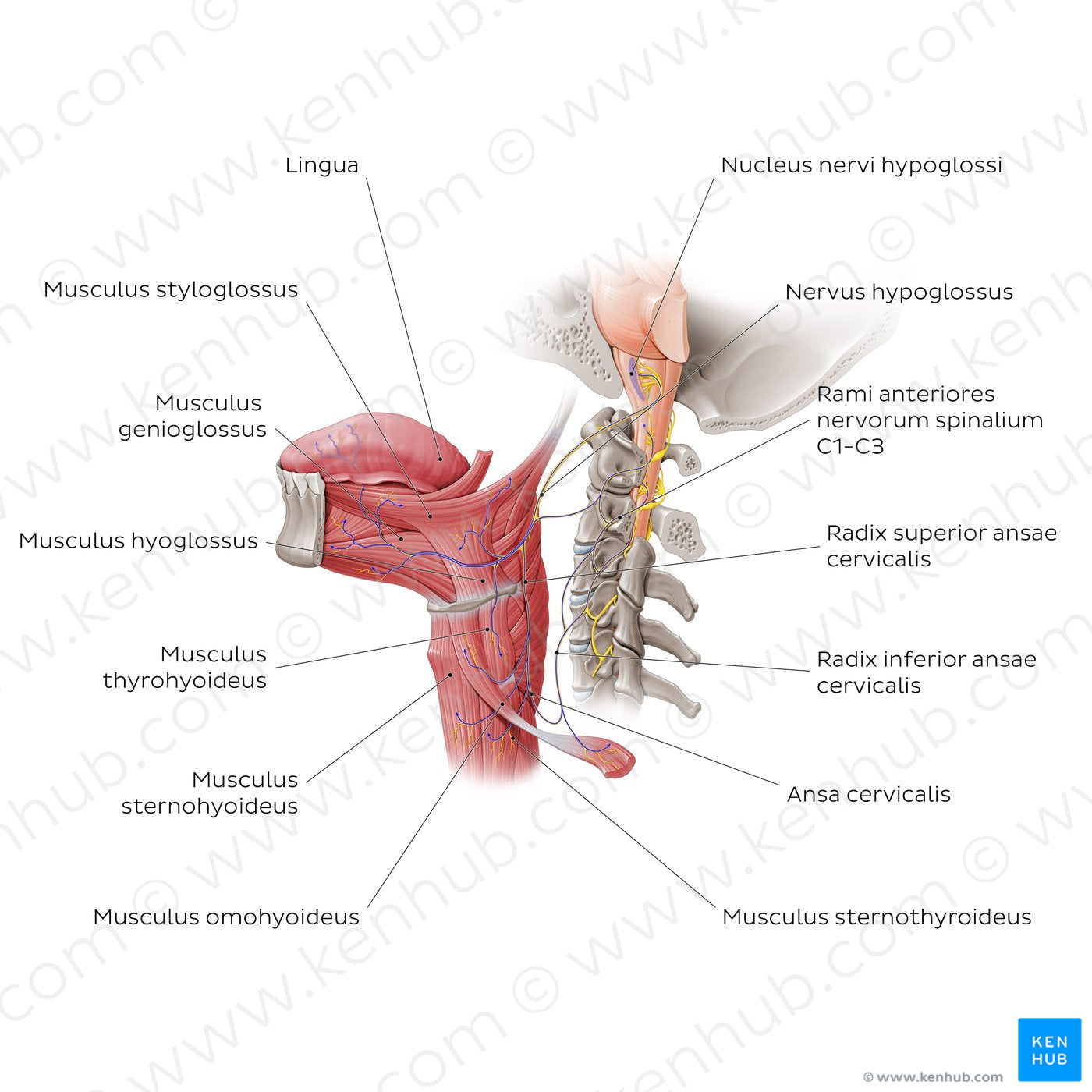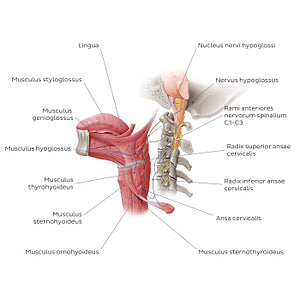Paul Kim
Hypoglossal nerve (Latin)
Hypoglossal nerve (Latin)
The n. hypoglossus (CN XII) arises as a series of rootlets from the ncl. nervi hypoglossi of the medulla oblongata. The rootlets combine to form the nerve proper, which then exits the cranium via the canalis hypoglossus. During its course, the n. hypoglossus receives fibers from n. spinalis C1 (and/or C2) which ‘piggyback’ the nerve, but do not mix with it. They leave the hypoglossal nerve as a series of branches: r. meningeus, radix superior ansae cervicalis, r. thyrohyoideus and r. geniohyoideus. The only 'true' branches of n. hypoglossus are the terminal rr. linguales that innervate the muscles of the tongue. These branches supply all extrinsic and intrinsic muscles of the tongue, with the exception of the m. palatoglossus, which is supplied by the n. vagus (CN X).
Regular price
$7.56 USD
Regular price
Sale price
$7.56 USD
Unit price
per
Couldn't load pickup availability


#DAB63A
#9E565E
#971E1C
#5D3F3E
#E8D699
#CFAFAC

